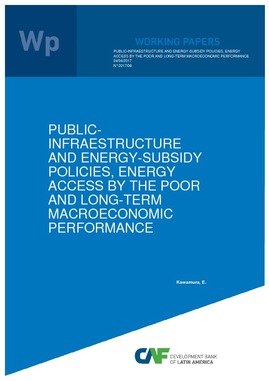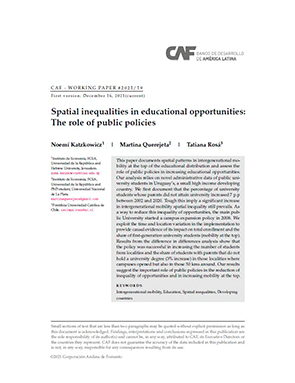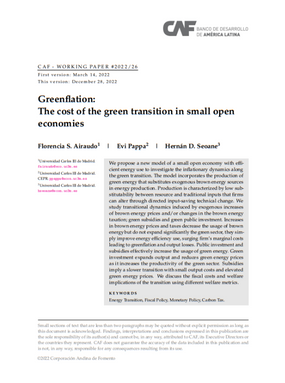Mostrar el registro sencillo del ítem
Public-infraestructure and energy-subsidy policies, energy access by the poor and long-term macroeconomic performance
| dc.contributor.author | Kawamura, Enrique | |
| dc.date.accessioned | 2017-05-31T13:56:18Z | |
| dc.date.available | 2017-05-31T13:56:18Z | |
| dc.date.issued | 2017-04-24 | |
| dc.identifier.citation | Kawamura, E. (2017, April 24). Public-infraestructure and energy-subsidy policies, energy access by the poor and long-term macroeconomic performance. CAF - Documento de trabajo;N° 2017/08, Bogotá: CAF. Retrieved from https://scioteca.caf.com/handle/123456789/1050 | en_GB |
| dc.identifier.uri | https://scioteca.caf.com/handle/123456789/1050 | |
| dc.description.tableofcontents | This paper presents the main set-up and long-run results from a simple deterministic version of a dynamic stochastic general equilibrium model of a small open economy in Kawamura (2017). The model assumes two types of households, one poor and the other non-poor. There are two types of energy used as both GDP input and consumption goods, one using a fossil-based resource (with a given international price) and another that uses public capital and that represents a non-standard, "clean" (i.e., non-fossil based) energy source. The paper reports the results from two types of policy makers. The .rst type corresponds to a benevolent and perfectly-committed government that sets complete plans of taxes, subsidies and public investment policies, including public infrastructure. The second type of policy maker is a politician that wins elections occurring in every period. Such politician implements policies promised at the electoral stage. This second policy-making process assumes that the politician can commit to policies only for the period in which she wins elections. The paper shows that a necessary condition for obtaining long-run growth in public capital, private capital, GDP and clean energy is that the international price of the resource increases steadily through time. Thus, both types of policy makers react to such increase by also steadily increasing the public investment. | es_ES |
| dc.language.iso | en | es_ES |
| dc.publisher | CAF | es_ES |
| dc.relation.ispartofseries | CAF - Documento de trabajo;N° 2017/08 | |
| dc.rights | CC-BY-NC | es_ES |
| dc.rights.uri | http://creativecommons.org/licenses/by-nc/4.0/ | es_ES |
| dc.subject | Economía | es_ES |
| dc.subject | Energía | es_ES |
| dc.subject | Infraestructura | es_ES |
| dc.subject | Investigación socioeconómica | es_ES |
| dc.subject | Pobreza | es_ES |
| dc.subject | Políticas públicas | es_ES |
| dc.title | Public-infraestructure and energy-subsidy policies, energy access by the poor and long-term macroeconomic performance | es_ES |
| dc.type | workingPaper | es_ES |
| dc.publisher.city | Bogotá | es_ES |
Ficheros en el ítem
Este ítem aparece en la(s) siguiente(s) colección(ones)
-
6.1 Documentos de trabajo en investigación socioeconómica
En esta colección se encuentran los documentos de trabajo sobre temas económicos y sociales prioritarios para la región.






